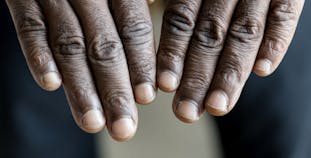March 31, 2020
Advance Online

Advance Online
What Your Nails Can Tell Your Doctor About PsA
The risk of psoriatic arthritis may be evident in your fingernails and toenails.

The risk of psoriatic arthritis may be evident in your fingernails and toenails.
We use cookies to offer you a better experience and analyze our site traffic. By continuing to use this website, you consent to the use of cookies in accordance with our Privacy Policy.